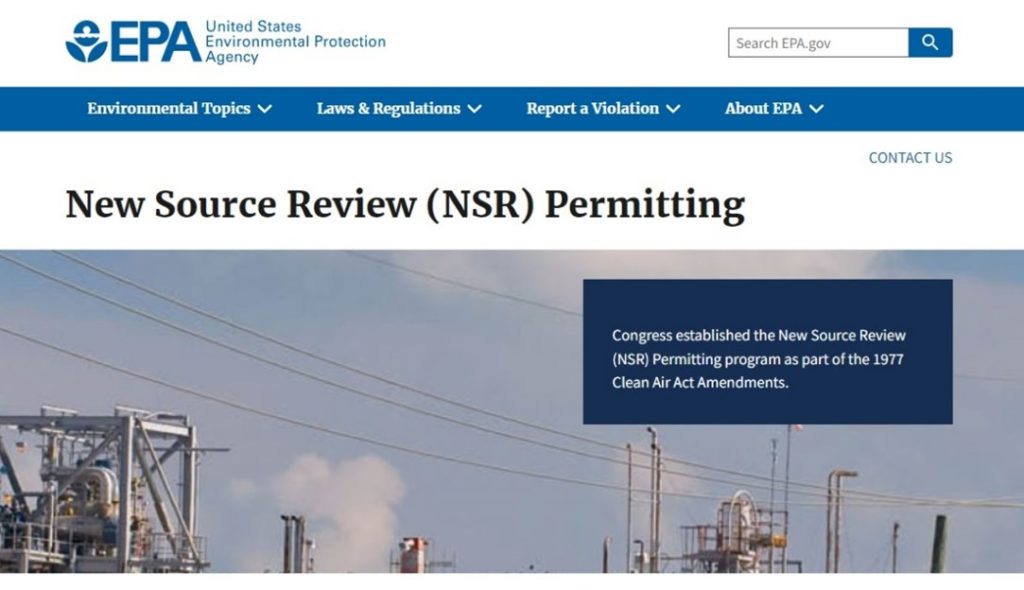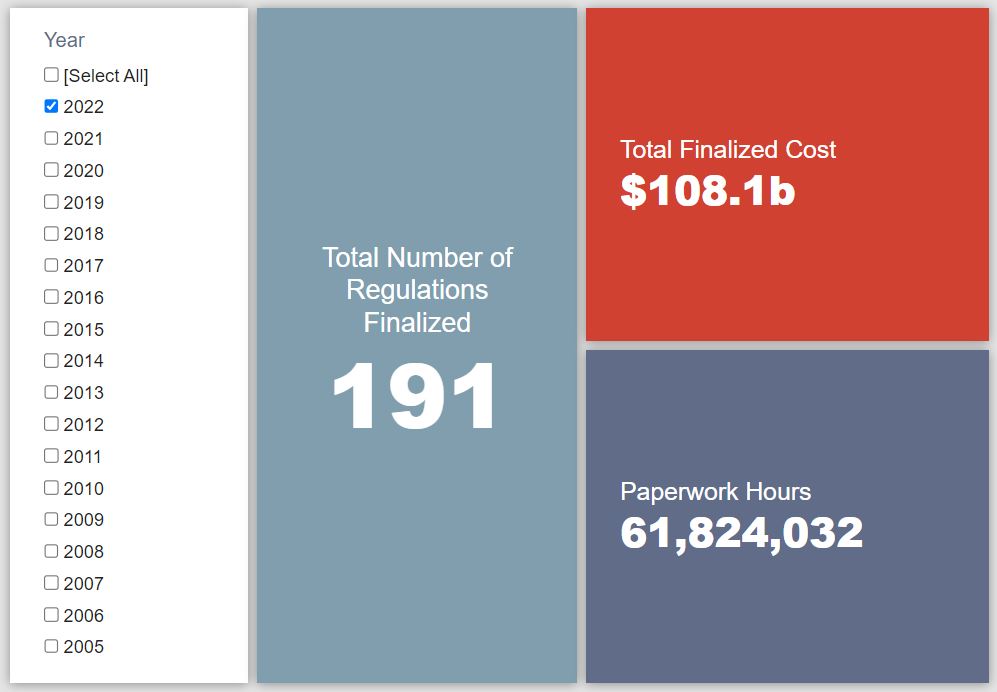Week in Regulation
October 17, 2022
Rules for Workers Rule the Week
Last week saw 11 rules with some measurable economic impact grace the pages of the Federal Register. Overall, however, it was yet another relatively modest showing. Rulemakings involving either worker protections or categorizations – from the Federal Aviation Administration (FAA) and Department of Labor (DOL), respectively – provided the main actions of the week. Across all rulemakings, agencies published $505.7 million in total net costs and added 261,758 annual paperwork burden hours.
REGULATORY TOPLINES
- Proposed Rules: 24
- Final Rules: 50
- 2022 Total Pages: 62,615
- 2022 Final Rule Costs: $108.1 billion
- 2022 Proposed Rule Costs: $124.6 billion
NOTABLE REGULATORY ACTIONS
The most significant rulemaking of the week, from a quantified cost-benefit standpoint, was the FAA rule regarding “Flight Attendant Duty Period Limitations and Rest Requirements.” The rule, which implements provisions of the 2018 FAA Reauthorization Act, establishes “that flight attendants scheduled to a duty period of 14 hours or less are given a scheduled rest period of at least 10 consecutive hours and that the rest period is not reduced under any circumstances.” FAA largely finalizes the rule as proposed, and thus finds that it would impose $277 million in costs over an “existing practices” baseline.
Perhaps the most consequential rulemaking from an overall policy perspective, however, was the DOL proposed rule regarding “Employee or Independent Contractor Classification Under the Fair Labor Standards Act.” The proposal stands as the Biden Administration’s attempt to reverse a rule on the matter that was finalized in the waning weeks of the Trump Administration. DOL estimates that the quantifiable costs of the rulemaking will largely come from workers and firms needing to familiarize themselves with the proposal’s new classification criteria. The agency expects $118 million in such costs during the first year of the rule’s implementation. The American Action Forum (AAF) dives into the current proposed rule’s broader labor market implications here.
TRACKING THE ADMINISTRATIONS
As we have already seen from executive orders and memos, the Biden Administration will surely provide plenty of contrasts with the Trump Administration on the regulatory front. And while there is a general expectation that the current administration will seek to broadly restore Obama-esque regulatory actions, there will also be areas where it charts its own course. Since the AAF RegRodeo data extend back to 2005, it is possible to provide weekly updates on how the top-level trends of President Biden’s regulatory record track with those of his two most recent predecessors. The following table provides the cumulative totals of final rules containing some quantified economic impact from each administration through this point in their respective terms.
![]()
The flight attendant rest rule discussed above provided the bulk of the Biden Administration’s $302.6 million final rule cost increase last week. Meanwhile, a DOL rule on temporary agricultural workers provided most of the administration’s roughly 86,000 hours of new paperwork from final rules. Across the other two administrations, there were only minimal-to-modest changes. The largest shift came in the Obama Administration’s final rule cost total increasing by $192.2 million, driven largely by a Department of Interior rule on safety standards for oil and gas drilling rigs.
THIS WEEK’S REGULATORY PICTURE
This week, the Environmental Protection Agency (EPA) reconsiders a fugitive emissions rule.

On October 14, the EPA published a proposed rule in the Federal Register reconsidering a fugitive emissions rule under the Clean Air Act (CAA). Fugitive emissions are “emissions which could not reasonably pass through a stack, chimney, vent, or other functionally equivalent opening.” Examples include windblown dust from surface mines and volatile organic compounds emitted from leaking pipes and fittings at petroleum refineries, according to the agency.
The rule in question pertains to the Prevention of Significant Deterioration (PSD) and Nonattainment New Source Review (NNSR) programs that are part of a broader regulatory scheme known as New Source Review (NSR).
NSR is a program designed to ensure that when a major new source of emissions of a regulated pollutant is to be built, EPA must approve the project to ensure it will not significantly contribute to additional pollution. A major new source is one that will emit pollutants above a certain threshold (which varies depending on the pollutant).
If the area in which the new source will be built is one of “attainment” for that pollutant under the National Ambien Air Quality Standards, or in compliance with EPA levels, the PSD program applies. If the area is in nonattainment, the NNSR applies.
In 2008, EPA issued a rule that limited the ways in which fugitive emissions are included in the calculation of a major source’s total emissions. The following year, EPA stayed enforcement of the rule pursuant to a petition filed by an environmental organization. In 2011, it issued an interim rule that stayed portions of the NSR regulations that were added or revised by the 2008 rule. The new proposed rule would finally repeal the 2008 rule in its entirety but have little practical effect since the rule has not been enforced for 13 years.
TOTAL BURDENS
Since January 1, the federal government has published $232.7 billion in total net costs (with $108.1 billion in new costs from finalized rules) and 136.9 million hours of net annual paperwork burden increases (with 61.8 million hours in increases from final rules).












